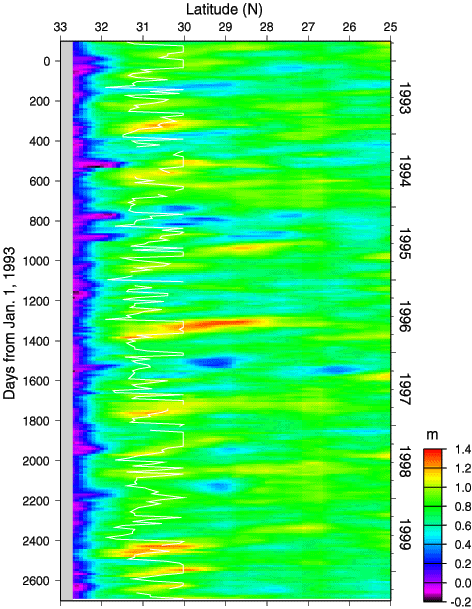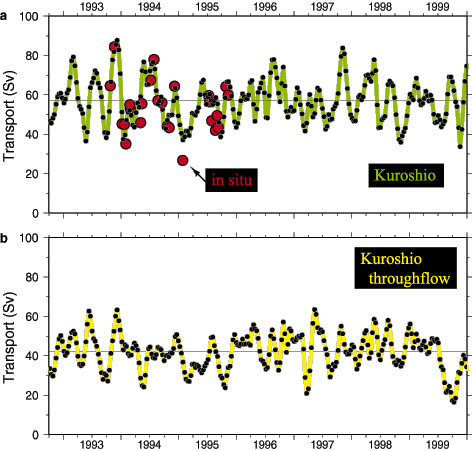* NOTE: The presently available geoid model is not accurate enough to be used with the altimeter data in order to estimate the absolute SSDT (deviation of the sea surface from the geoid).
Therefore only anomalies from the temporal mean are usable in the altimeter data.
In this study, the temporal mean SSDT profile along the track was estimated as follows.
At location x and time t, the absolute SSDT(x,t) is written as follows;
SSDT(x,t)=SSDT_mean(x)+SSDT'(x,t).....(1)
where SSDT_mean(x) is the temporal mean SSDT, SSDT'(x,t) the fluctuation SSDT.
The SSDT(x,t) profile was estimated repeatedly from in situ oceanographic data (Fig. 3c), referred to the tide gauge data at Cape Ashizuri.
SSDT'(x,t) profile was derived from the altimeter data.
Using those profiles, the unknown SSDT_mean(x) profile was estimated from Eq. (1), using the least-squares method.
The sum of the resulting SSDT_mean(x) profile and a SSDT'(x,t) profile from the altimeter data gave a accurate individual absolute SSDT(x,t) profile.
|






 Time series |
Seasonal signal |
References ]
Time series |
Seasonal signal |
References ]